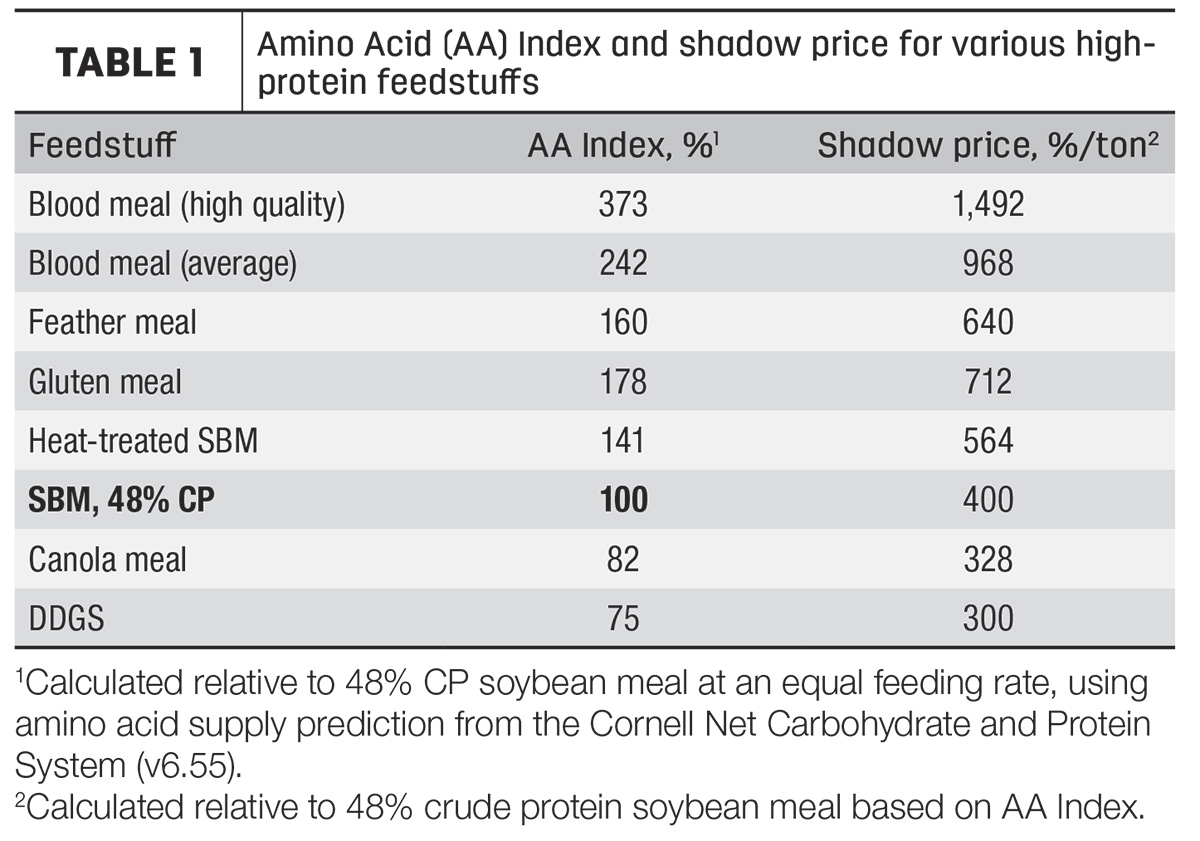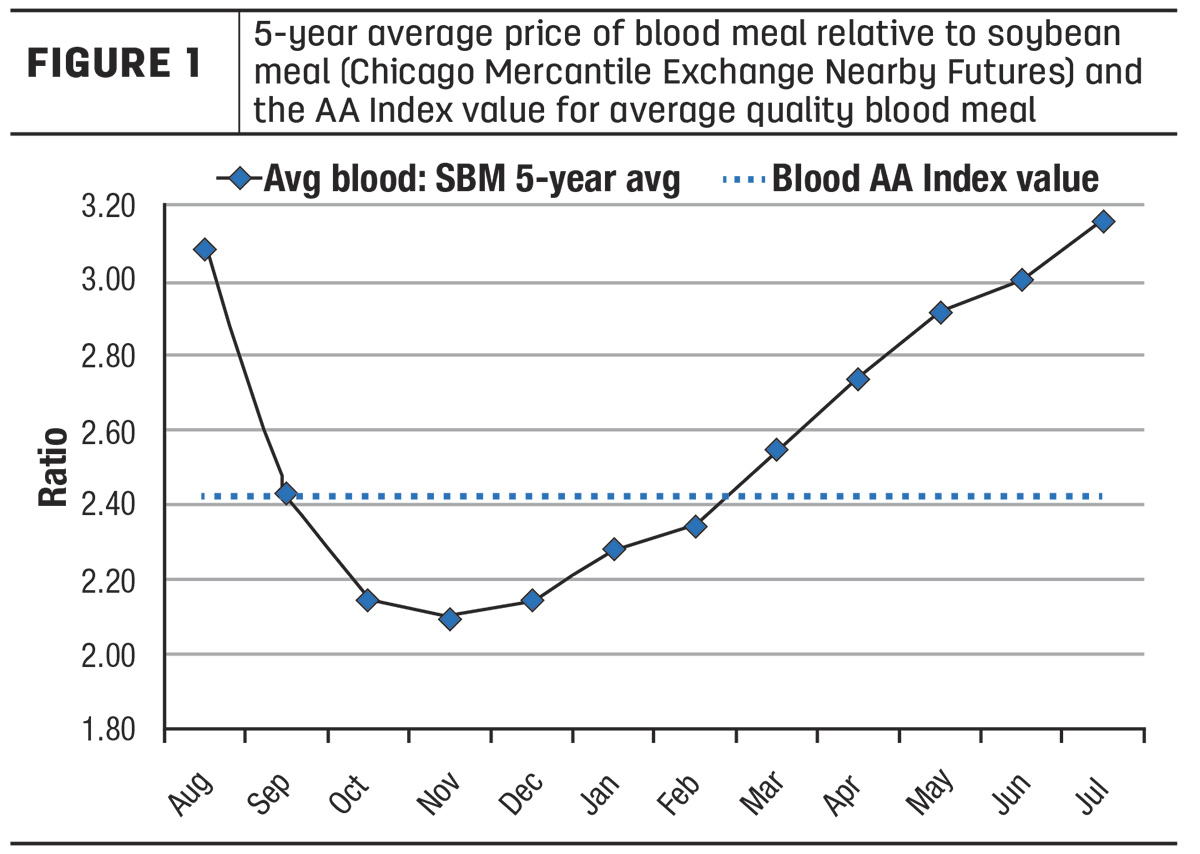Historically, we have valued high-protein feeds based on their crude protein content. Blood meal has twice the protein as soybean meal; so logically, it should be twice as expensive as soybean meal. However, we all know this approach is flawed.
The value of a feed should really be based on metabolizable amino acid supply – remember, not all amino acids are created equal for a dairy cow. Some have a much larger impact on milk protein production – methionine, lysine and histidine – whereas others, like the nonessential amino acids, have no impact or only a small impact on milk protein production. So, the question remains: How should we account for this when determining the value of different feedstuffs?
Until recently, there was no great way to put a numeric value to the amino acid profile of feed. With the release of the 2021 National Academies of Science, Engineering and Medicine (NASEM) dairy guidelines, we now have a method to determine the relative value of the amino acid profile of a given feedstuff. In NASEM, there is an equation to predict milk protein yield that includes amino acid supply along with other nutrients.
Based on these new equations, another question emerges: How do we determine the quality of a given protein source? For years, human nutritionists have used something called the “Digestible Indispensable Amino Acid Score” to assess the quality of protein from different foods. With this method, we know that meat and milk supply a better amino acid profile for humans than vegetable protein such as soy, peas, etc. Based on the same premise as the human nutrition approach, we can apply the equations generated by NASEM 2021 to assess the protein quality of different feedstuffs.
The values generated from this approach are indexed relative to a baseline feedstuff. We have termed this value the Amino Acid (AA) Index. In the example in Table 1, soybean meal is used as the reference protein, as this is generally the most commonly fed protein source for lactating dairy cows. Keep in mind, this approach only looks at the metabolizable amino acid supply from a given feedstuff. Thus, it does not account for positive or negative values due to other nutrients (energy, rumen-degradable protein, fatty acids, etc.).

Blood meal is known for being a high-quality amino acid source, which is highlighted by an AA Index of 242% of soybean meal. Interestingly, the average price of blood meal relative to soybean meal over the past five years has been very close to its AA Index (235% on a cash market basis). Price of blood meal can be quite variable, with prices being the lowest in the fall and winter months and highest in the spring and summer months (Figure 1).

Additionally, the quality of an ingredient matters when determining its AA Index. Because the value is based on metabolizable amino acids, the digestibility of the bypass protein can have a large effect. For example, high-quality blood meal has a rumen-undegradable protein (RUP) digestibility around 85% in NASEM 2021. This ingredient would supply more metabolizable amino acid to the cow and thus more milk protein compared to a lower-digestibility blood meal. This is reflected in its AA Index, which is 373% of soybean meal or 131 units higher than average-quality blood meal.
The AA Index can be used as an additional tool to compare different protein sources for lactating cow diets. The major advantage of using AA Index to assess feedstuffs is that it is more likely to be directly related to animal responses than crude protein or metabolizable protein. These assessments are based on the most up-to-date nutritional recommendations for dairy cows.






